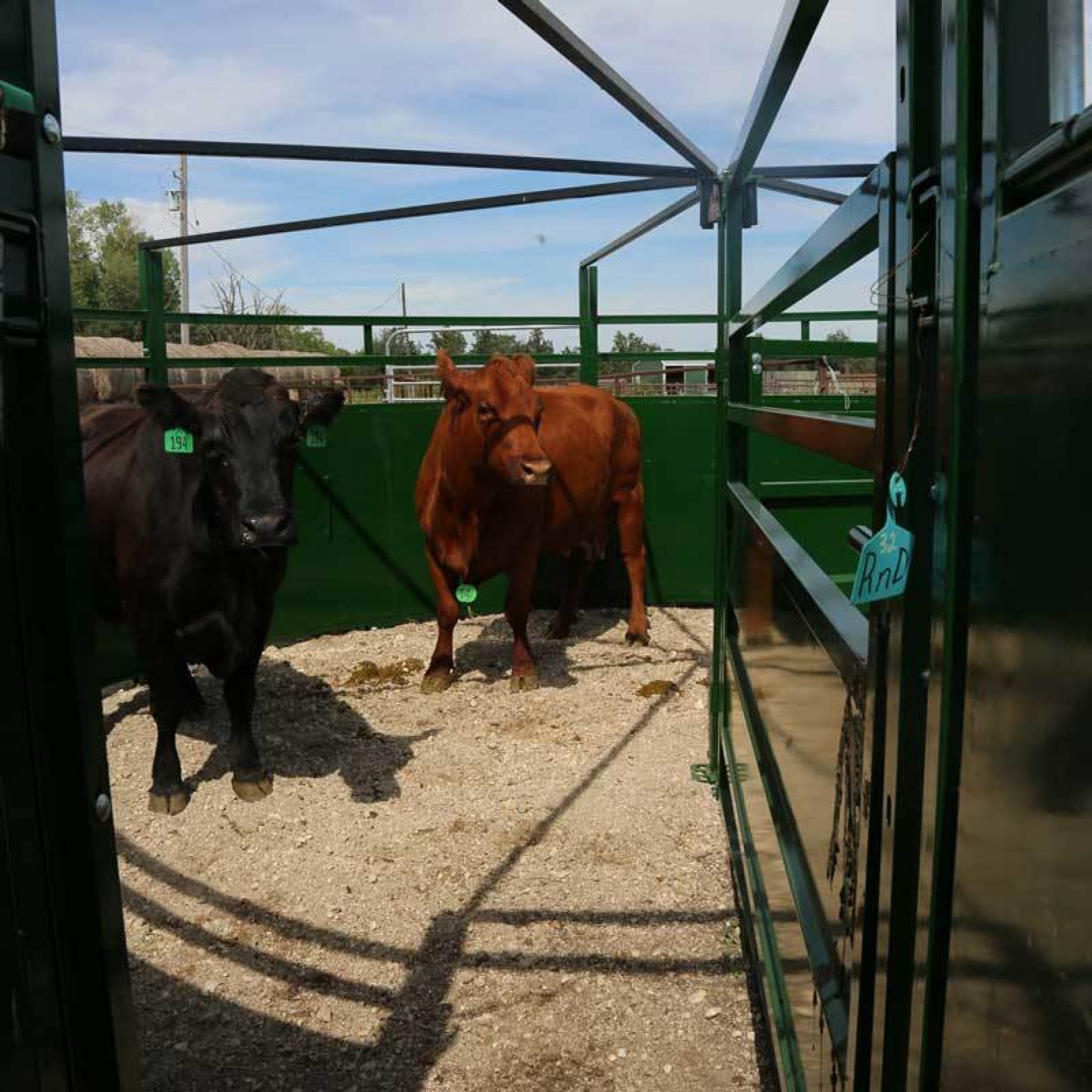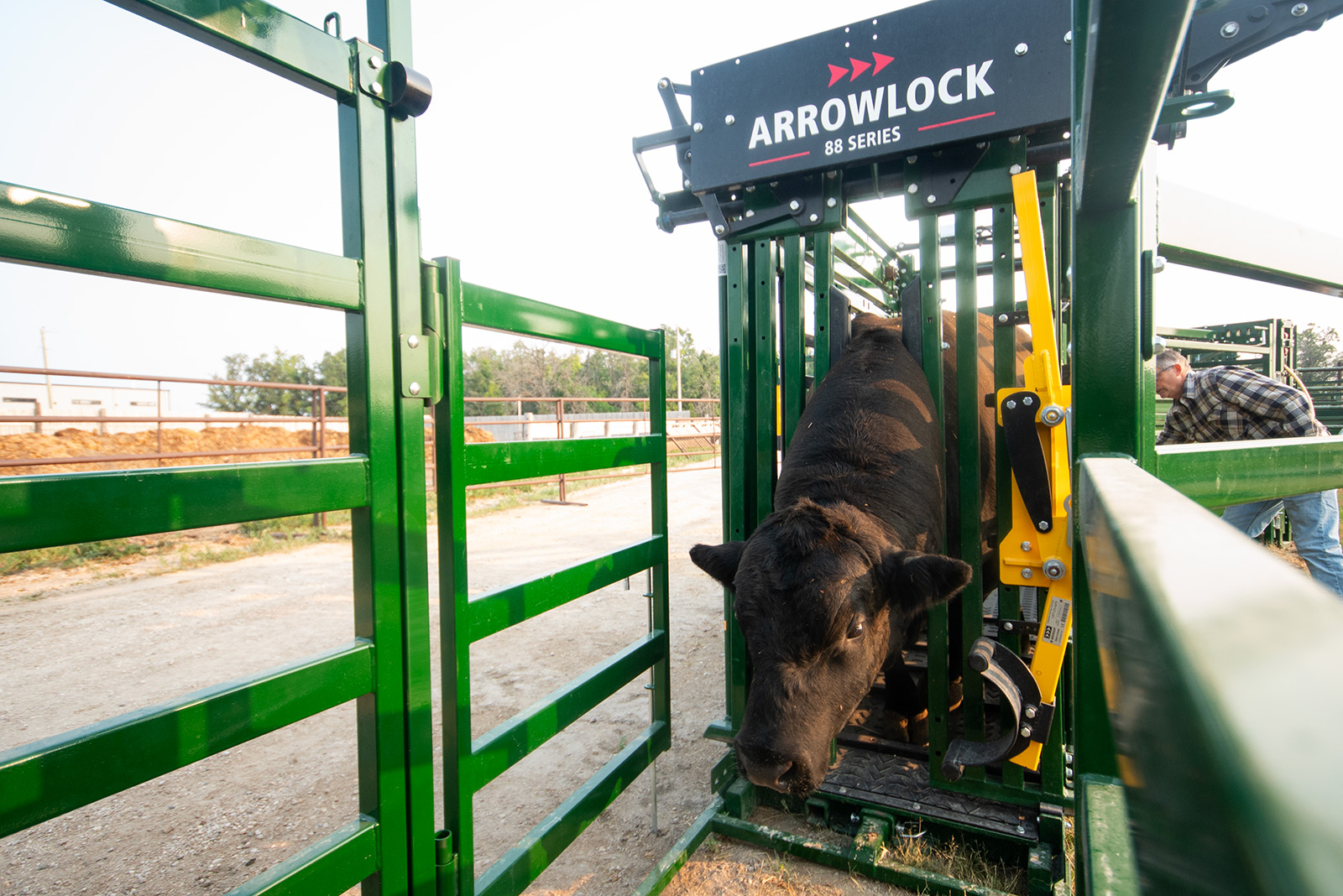Cattle Handling 101: Simple Rules to Become an Expert
Fundamentals Every Rancher Should Know About Safe Cattle Handling
Go Back to All BlogsPosted on: May 7, 2019
Updated on: October 21, 2025
Author: Dana Charban
SHARE:
Years of research and experience have shaped cattle handling guidelines, and they can be applied to beef or dairy cattle of any breed. You can become an expert by following these simple rules from the experts.
The basis of effective cattle handling are centered on pressure and release. Cattle can be trained to be handled; they are intelligent animals and try to respond correctly. Often, when cattle aren't doing what they are asked the handlers may be using incorrect techniques.
Bud Williams defined three basic premises of cattle handling. These include using handling techniques that cattle respond to naturally, not using any force, and not using handling techniques that bother cattle; you want cattle to respond calmly.
"The role of a handler in stockmanship is to create movement in cattle and then use position to control and manage that movement to the desired result, says Dr. Ron Gill in his Cattle Handling Pointers.
Here are some simple rules to help you become an expert:
1. Understand Cattle Behavior
Cattle have a flight zone and point of balance. They want to see you and be with other cattle. Use their behavior to your advantage when handling cattle. If you're not familiar with cattle behavior, resources are available, including the Effective Stockmanship website, Grandin.com, and Beef Quality Assurance.
2. Cattle Behavior Should Guide Handling Techniques
We've been studying animal behavior, although perhaps less formally, for thousands of years, since animals were first domesticated. Throughout history there have been examples of good and bad cattle handling. We can build off of this knowledge to improve our own handling techniques. Curt Pate recommends everyone read the book, What The Cow Said To The Calf by Ballie Buck. We are always improving and learning in our cattle handling techniques.
We can use pressure and release to handle cattle, as long as they have somewhere to go. Create a plan for handling the specific cattle before you start working. Understanding the flight zone and using your position to start or stop movement is key to effectively handling cattle. As a handler you must keep cattle comfortable so that the will go by you and do what you want.
3. Slow Down
All of our experts agree that moving too fast, or trying to push cattle faster than they are able to move, or before they are ready will only slow down your operation, and could lead to injuries for cattle or handlers. Cattle handling should be intentional, methodical and precise. If you slow down your handling techniques, you will find that your operation is faster and more efficient in the long run. Moving animals too quickly also has negative effects on health and performance. Improving your cattle handling techniques will improve overall herd health.

4. Don't Work Cattle from Behind
Ideally, cattle shouldn't be worked from the rear. Cattle have a blind spot directly behind their tail and hindquarters. They are also prey animals, and associate a handler behind them as a predator. Unless it's absolutely necessary, don't work cattle from behind. Work to one side or the other instead. You should also move in straight lines to stimulate movement, predators use an arch pattern.
5. Handle Smaller Groups of Cattle
It's more challenging to handle cattle effectively when they are in large groups. Working cattle in large groups is generally when we see cattle pushed from behind, especially those at the back of the group. Speed is sometimes introduced with larger herds of cattle, and again, hinders progress and safety.
6. Never Chase Lone Animals
As a rule, cattle are herd animals and want to be with other animals. Cattle should be worked slowly back to the rest of the herd. Give them the time and space to work this out for themselves. Set them up for success by blocking off the wrong routes and creating a clear path for them to rejoin the herd.
7. Be Mindful of Your Actions
Avoid yelling, moving too quickly, or unnecessary actions. Remember that cattle are smart and want to do what the handler is asking. If you find cattle aren't moving correctly, evaluate your handling techniques, and see if there is something you could be doing differently to have cattle respond correctly. Stockmanship skills must be used consistently. Every time you are near the cattle you are handling them.
8. Adapt Handling Techniques to the Situation
Handling cattle in a pen or chute system requires different techniques than handling cattle on the range or in an open area. While the same basic principles always apply, you should also adapt your handling method for the cattle being handled, since different breeds of cattle react differently, and the location you are handling them in. Steve Cote incorporated his horsemanship skills into cattle handling, and notes that the same techniques work on bison, antelope, deer, sheep, goats, horses, and dairy and beef cattle.

9. Acclimate Your Cattle
It can't be emphasized enough that cattle should be acclimated to the handling system prior to being handled for procedures or movement. First experiences should be positive, and set the cattle up to understand the goal of movement. Then, cattle will work with you and be easier to handle in the future.
Curt Pate emphasizes that effective stockmanship is a cornerstone of increased economic benefits in a cattle operation. Videos on his website provide basic cattle handling guidelines, and training events are offered across Canada and the United States. Temple Grandin also offers a series of videos on cattle handling that can improve your techniques.
Cattle handling skills are an important part of the success of your cattle movement practices. Effective stockmen also understand that their facilities play a vital role in cattle handling. For guidelines on improving your cattle handling facilities, check the resources provided by Dr. Temple Grandin and our other animal behavior experts.
Becoming an expert in cattle handling takes time and consistent dedication to using the correct techniques. It's also a lifelong process, as we can always continue to grow and improve in our stockmanship abilities.
References:
Beef Quality Assurance. (2015). Cattle handling guidelines. Available at: https://www.bqa.org/Media/BQA/...
Cote, S. (2018). Cote Stockmanship. Available at: https://www.cotestockmanship.c...
Gordon, K. (2007). Temple's top animal handling tips. Available at: https://www.beefmagazine.com/a...
Grandin, T. (2018). Recommended Basic Livestock Handling. Available at: https://www.grandin.com/behavi...
Pate, C. (2018). Curt Pate stockmanship. Available at: https://curtpatestockmanship.c...